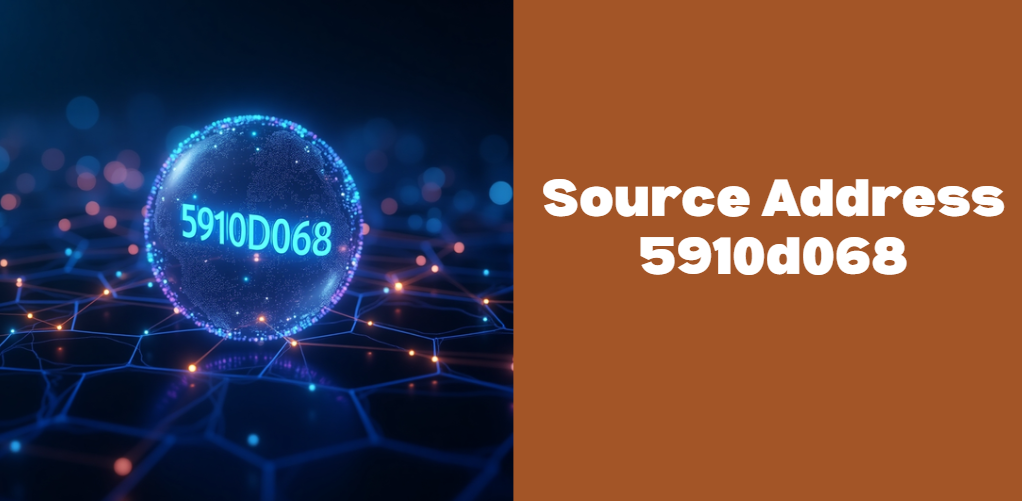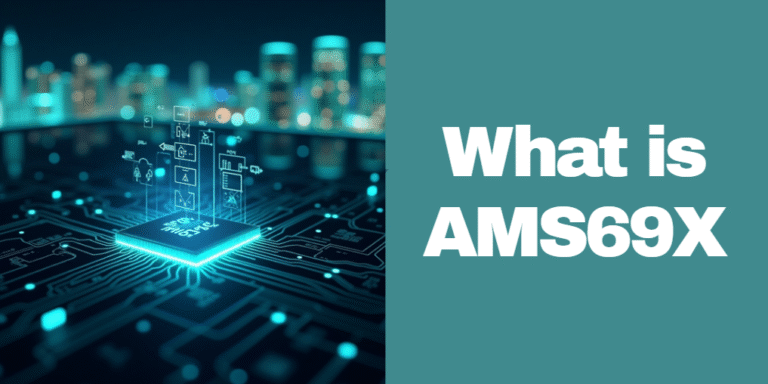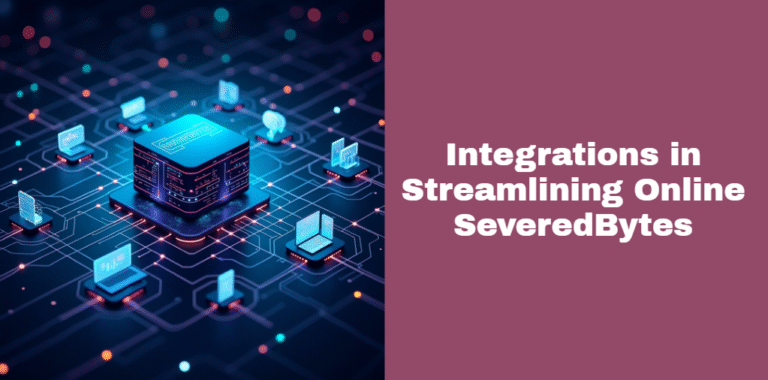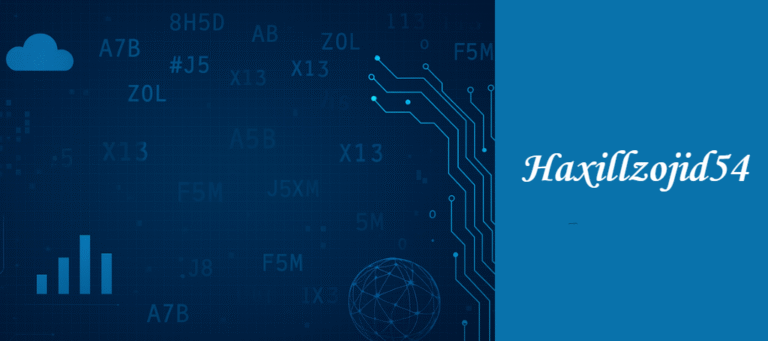Understanding Source Address 5910d068: A Deep Dive into Networking and Hexadecimal IP Conversion
In the world of digital networking, the concept of a source address is fundamental. It plays a vital role in identifying where data packets originate. One such specific source address, source address 5910d068, may seem like a random hexadecimal string to most people.
However, with the right approach and knowledge, it can be decoded into an IPv4 address that holds real significance in networking.
This detailed and easy-to-understand content will guide you through everything about source address 5910d068, including what it represents, how it is interpreted, and why it’s important in cybersecurity, log tracking, and network communication.
Decoding the Hexadecimal Value 5910d068
Hexadecimal notation is commonly used in computing and networking due to its compact and readable format. To understand source address 5910d068, we need to convert it from hexadecimal into a human-readable IP address.
The hexadecimal string 5910d068 can be broken down into four byte pairs:
| Hex Pair | Decimal Value |
|---|---|
| 59 | 89 |
| 10 | 16 |
| D0 | 208 |
| 68 | 104 |
When each of these hex values is converted into decimal, they become the four octets of a traditional IPv4 address. So, 5910d068 becomes 89.16.208.104 in decimal IP format.
This address can now be easily interpreted by networking tools, firewalls, routers, and log analyzers.
Understanding the Role of Source Addresses
A source address is used in networking to identify the origin of a data packet. Every time a device sends data over a network, it attaches its IP address as the source. This allows the receiving device or server to know where the data came from, enabling two-way communication.
In the case of source address 5910d068, the hexadecimal representation may appear in network logs, packet captures (PCAP files), or firewall logs, especially when systems log data in raw or compact format to save storage and processing power.
Practical Use Cases of Source Address 5910d068
The hexadecimal IP format isn’t just for aesthetics or compression—it has real-world use cases. Let’s explore how an address like source address 5910d068 could appear in practice:
- Packet Inspection Logs: Network monitoring tools like Wireshark or tcpdump may capture traffic and represent IPs in hexadecimal form.
- Firewall Rules: Advanced firewalls or low-level security software might display or require hexadecimal IPs for configuring rules.
- Security Auditing: Cybersecurity teams might encounter hex addresses during forensic analysis or reverse engineering of malware traffic.
Technical Explanation: Byte Order and Endianness
When dealing with hexadecimal addresses like source address 5910d068, it’s crucial to understand the concept of byte order. In computing, data can be stored in big-endian or little-endian format. This determines the order in which the bytes are read and written.
For most network applications, big-endian order is used, which means the bytes appear in the order they are meant to be read. So, the hex 5910d068 is read directly as four pairs from left to right: 59, 10, D0, 68.
Mistakes in interpreting endianness can lead to incorrect IP resolution, which may hinder log analysis or cause firewall misconfigurations.
Tools for Hexadecimal to IP Conversion
Whether you’re a network engineer or a student, converting a source address like 5910d068 can be done with many tools:
Online Converters:
These web-based tools allow you to paste the hex value and instantly get the IP:
- Browserling Hex to IP
- IP-Address.org Hex Converter
- CodeBeautify Hex to IP tool
Command Line Methods:
For professionals working in Linux or macOS terminals:
- Python:
import socket, struct print(socket.inet_ntoa(struct.pack("!I", int("5910d068", 16)))) - Bash (Linux):
printf "%d.%d.%d.%d\n" 0x59 0x10 0xD0 0x68
These methods are reliable and can be integrated into scripts for automated network monitoring or auditing.
Case Studies and Real-World Applications
Understanding source address 5910d068 is not just an academic exercise. Here are some scenarios where such knowledge becomes crucial:
Log Analysis
A security analyst inspecting server logs finds a suspicious entry with source address 5910d068. Converting it to 89.16.208.104 allows the analyst to check its origin, flag the IP, or trace its activity in a database.
Intrusion Detection
An IDS (Intrusion Detection System) flags repeated access attempts from hex address 5910d068. Recognizing and decoding this pattern could help block an attacker before any damage is done.
Network Troubleshooting
A system admin sees multiple failed connection attempts in hexadecimal IP format. Understanding how to translate values like 5910d068 helps identify rogue or misconfigured devices.
Common Mistakes and Pitfalls
Misinterpreting a source address can cause significant issues:
- Wrong Byte Order: Reading the bytes in reverse can lead to identifying the wrong IP address.
- Formatting Errors: Missing a leading zero in a hex value can throw off the entire conversion.
- Cross-Platform Differences: Some systems log IPs in hex, others in decimal. Without proper conversion, correlating data across systems can be impossible.
Being precise with hexadecimal interpretation helps avoid these common but serious errors.
Advanced Insights: IPv6 and Security Implications
While source address 5910d068 is an IPv4 format, the same concepts apply to IPv6, though the address length and complexity increase. In future-proof networks, understanding both formats is essential.
Additionally, security-wise, malicious actors often use obfuscated IPs in hex format to avoid detection. Being able to decode such addresses strengthens your defensive strategies and supports smarter filtering.
Best Practices for Handling Source Addresses
To ensure smooth operations and security, consider the following practices:
- Always verify the format before applying firewall rules.
- Maintain documentation of how your systems log source addresses.
- Automate hex-to-IP conversion for log aggregation.
- Train network staff on interpreting both hex and decimal formats.
Understanding addresses like source address 5910d068 not only improves technical accuracy but also enhances your network’s resilience.
Conclusion
In today’s digital world, where every bit and byte can hold meaning, being able to decode and understand something like source address 5910d068 is a valuable skill. What looks like a meaningless string of characters is actually an IP address—89.16.208.104—that could help identify a user, track malicious activity, or resolve connectivity issues.
Whether you’re analyzing server logs, setting up firewalls, or securing your network from threats, knowing how to interpret hexadecimal source addresses equips you with powerful knowledge.
By converting and contextualizing values like source address 5910d068, you become better prepared for the complexities of modern networking and cybersecurity.
Recommended Articles
0-Saiji Start Dash Monogatari Manga Coffee Manga – Full Story Guide, Characters & Impact
MSI Quartz vs Vadara: A Complete Comparison for Homeowners & Designers
Uncovering the Truth About 805-354-1683: Scam Alert, Safety Tips & Real Call Reports
Leanna Marie Boose May 3 1997: A Life Remembered for Art, Advocacy, and Community Impact





